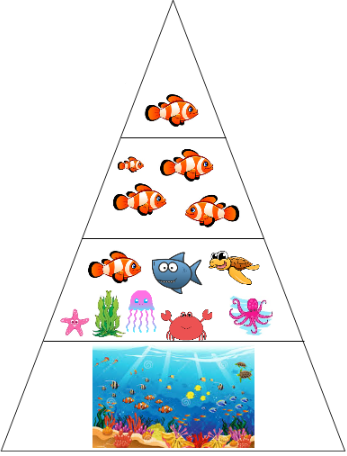ecology
classification
organism - a living thing
classification - an organisation of living things (organisms) into groups according to their similarities
unicellular - living thing that consists of a simple cell
multicellular - living thing made up of many cells
the first two kingdoms linneas suggested where animalia and plantae
the microscope meant scientists discovered lots more living things
the six kingdoms of life scientists use to classify living things are:
archaea
microscopic
unicellular
often live in extreme enviroments
bacteria
microscopic
unicellular
no seperate nucleus
animalia
multicellular
cells have a nucleus
move freely
get energy from consuming other organisms
plantae
multicellular
cells have a nucleus
cannot move freely
uses energy from the sun to make sugars
fungi
multicellular
cannot move freely
absorb nutrients from other organisms
protista
most are unicellular
cells have a nucleus
eg. amoeba and algae
reptiles - lay leathery eggs, dry scales
fish - lay eggs in water, wet scales, breathe through gills
amphibians - moist skin, lay jelly coated eggs in water
birds - lay hard shelled eggs, have feathers
mammals - give birth to live young, produce milk (mammary glands), have hair
organisms, populations, and habitats
ecology - study of the interactions of living organisms with each other and their environment
organism - one individual, a single living thing
population - a group of interbreeding organisms living in the same area
community - all the organisms, all types, living in the same area
ecosystem - all the organisms, living in the same area and their non-living environment
habitat - the place where an organism lives, has all of the things an organism needs to survive eg. right amount of water, light, and oxygen

food chains and food webs
producers - organisms that make their own food through photosynthesis eg. trees and algae
consumers - organisms that eat producers or other consumers eg. grasshoppers and rabbits
herbivores - animals that only eat plants eg. cows and elephants
carnivores - animals that only eat other animals eg. wolves and lions
omnivores - animals that eat both plants and animals eg. chimpanzee and racoon
decomposers - organisms that feed off other dead organisms eg. slugs and beetles
food chain - diagram that shows what an organism eats
food webs - a combination of all the food chains in a particular community
each step in a food chain is called a trophic level
fox - tertiary consumer
hedgehog - secondary consumer
caterpillar - primary consumer
lettuce - producer
pyramids
biomass - mass of living organisms found in each level of the food chain, calculated by multiplying average mass of organism by total number of organisms
pyramids of numbers
in a pyramid of numbers the length of each bar represents the number of organisms at each level in the food chain
a single tree can support many organisms
pyramids of biomass
in a pyramid of biomass the length of each bar represents the biomass at each level of the food chain
at each level, the amount of biomass and energy available is reduced, giving us a pyramid shape
most food chains are rarely more than 3 or 4 levels, why?
too much energy loss
not enough food for higher levels
energy’s released through keeping warm and waste
small amount used for growth and biomass
competition and limiting factors
limiting factor - anything that reduces the size of a population
animals main limiting factors:
resources
food
space
water
mates
other factors
being eaten (preditation)
competition
disease
competition - occurs when two organisms are in need of the same resources
plants main limiting factors:
resources
light
space
water
soil minerals
other factors
being eaten (grazing)
competition
disease
types of competition
interspecific - between members of different species
intraspecific - between members of the same species
organisms | limiting facors/resources | type of competition |
|---|---|---|
water buffalo | being eaten | none |
lions | food | both |
hyenas | food | both |
snowdrops | light, soil minerals, space, water | both |
bluebells | soil minerals, water, space, light | both |
cacti | water | intraspecific |
bats | food | intraspecific |
predator-prey relationships
all organisms have adaptations that increase their chances of survival and reproduction
physical
eg. camouflage
behavioural
eg. walking stealthily
human impact on the environment
pest - any destructive organism that attacks crops, food, livestock, etc.
pesticides kill pests that would otherwise damage crops, reducing yield and profit
they break down and become harmless over time, OR are persistent and not broken down
they dont break down well in the environment
bioaccumulation refers to the accumulation of substances such as persistent pesticides or other chemicals in an organism
the high up the food change an organism is found, the greater amount of bioaccumulation
indicator species - used to assess the overall health of an ecosystem by looking at their presence, absence or abundance. it can reflect the levels of pollution
lichens are plants that grow on exposed places such as rocks or tree bark
they need to be very good at absorbing water and nutrients to grow
rain water contains just enough of these to keep them alive
because they are so sensitive, air pollution such as sulphur dioxide dissolved in rain water stops them from growing
 Knowt
Knowt
